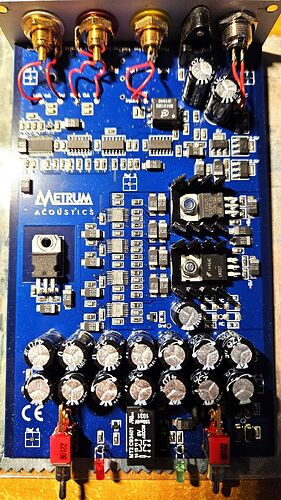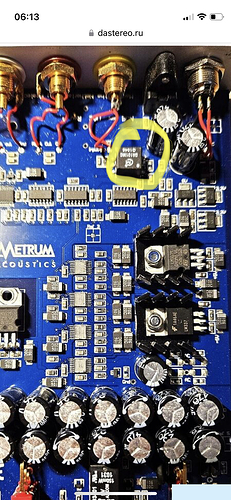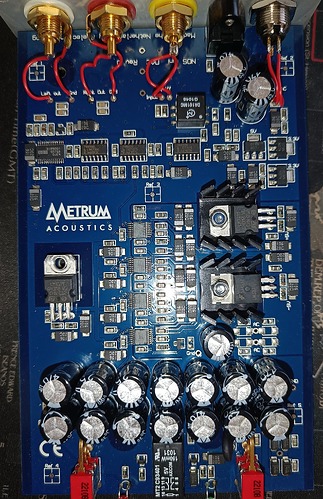Metrum Newsletter
Welcome to our newsletter.
It’s a 5 minute read, gives a hint at what’s been happening and gives an idea of the Musical future.
Our vision moving forward: merge our two brands

We feel lucky and proud that we can do what we do best; make beautiful equipment for Music enthusiasts, discerning audiophiles and professionals in the music industry. The audio products of both Metrum and Sonnet are produced in the same factory by the same team and share much of the same concepts and functionality. After two years of working side by side it is time to move in together and merge our companies with Metrum as the older, stable partner, and Sonnet as the fresh wind. On top of that, Acelec recently joined the crowd with our latest speaker. We feel that having three websites and three companies is not cost-effective and is confusing to our customers. So… we’re launching our new website and will continue both the Metrum and Sonnet brands, with Metrum being our high-value product line for customers looking for the ultimate true-to-nature sound experience, and Sonnet our value-for-money line bringing high quality products at a very competitive price.

The Metrum Adagio is our premium product; luxuriously shaped, a dual damped frame, has weight and pace, an elegant hardened glass top panel and is the most feature packed product in the Metrum line. The dual mono buildup of the DAC and triple power supplies ensure distinguished and lush bass, true-to-nature sound with NOS digital-filter-less goodness and amazing focus on placement of instruments in recordings. Metrum is Music with a capital M, looking and sounding great!

Like Metrum, Sonnet is a top-of-the-line product. It delivers value for money whilst sounding amazing. A larger part of the Bill of Materials (BOM) is spent on the electronics, while the design is timeless. The displays are informative but can also be turned off. The same NOS principles are built into the Sonnet line. You can hear every detail and the location of every instrument.

Acelec is the brand of our Model 1 loudspeaker. Critical listening, easy placement and very accurate sound stages are assured by implementing only the best materials, combined in a smart and innovative way. The 15 mm “bituminized aluminium” sandwich makes for a very silent cabinet. The dual slope filter is seamless and gives a very smooth phase response. The waterfall plot reveals a very short decay with no reverberations or stored energy due to the high damping. This makes for a yield of 84dBWm-1, and it is still very capable of filling your room with Music. The Acelec Model 1 loudspeaker is special and you have to hear it to believe it.
Who are we?
Metrum Acoustics and Sonnet Digital Audio are two descendants from the same founding father, Cees Ruijtenberg, with Lion Kwaijtaal as co-founder of Sonnet (for a short history, click here). Both companies we are dedicated to building Digital to Analog Converters (DACs) sounding ‘True to nature’, in our own way, for you, our valued music loving customer. In our factory in 's-Hertogenbosch, the Netherlands we innovate, finding better techniques, parts and circuits to make the DAC modules sound even better. It’s also the place where we populate our circuit boards, solder, test, build the components together in a housing, re-test, burn-in, end-test and finally package your new audio equipment… We’ve also put our DAC expertise to use to develop amplifiers, streamers and speakers. All disciplines are in-house to make a complete audio device from scratch. The most recent additions to our dedicated team are Stefaan, Paulo, Daniël, Ferris and Roelof. They take care of sales, production and service. You will see the name of Roelof (engineering and tech support) or Stefaan (sales) pop up when you have a question or special request. To this day, Cees is also still involved as our guide and mentor. Occasionally, he likes to come over for a cup of coffee and discuss audio stuff too ![]()

To show you our handcrafted products - and offer you a new order portal - we built a new website. All our products can be compared and are ready to order online from one website: metrumacoustics.com. We will keep the same buy and try policy: try the product in your own setup for 30 days and if you don’t like it you can return it hassle-free.

Our team has many years of experience in engineering, producing and assembling high end audio equipment. We are unique in the sense that we make our products ourselves: volume controls, circuit boards and software are all made by our team. Even our DAC modules, the core of our product, are manufactured in-house. Therefore, we have very detailed knowledge of our product, can uphold tight tolerances and solve problems quickly when they arise. Moreover, we also service every Metrum and Sonnet device ever made, for as long as we can source parts. Our dedicated in-house engineering team members Cees, Ferris, Lion and Roelof continuously work on new ideas, with the best ideas being built into prototypes.
Core Technology
“It’s what it sounds like that matters, not what’s inside”
Back to the core of our product (for our tech-savvy enthusiasts); the DAC module and what it does. The Metrum and Sonnet approach in Digital to Analog conversion is unconventional, deploying Non Over Sampling (NOS) and Digital-Filter-less True multi-bit DAC modules using R2R ladder chips. Off-the-shelf audio DAC chips all implement some form of digital filter or oversampling. Because we have adopted the NOS technology, we use non-industry-standard R2R ladder chips for the conversion, resulting in our proprietary DAC module. Fast FPGA based Forward correction in the module splits the digital bit-stream, in the end resulting in lower noise, greater linearity and a larger dynamic range. Due to the lack of digital filters no pre- or post-ringing is present, ensuring a natural rendition of recordings with very low latency. Phase linearity over the whole audible frequency spectrum is within 10 degrees for the whole product line.

Music is rhythm, timing, cadence and Metrum (Oxford dictionary: musical measure of time or tempo). Get the timing right, and all instruments in the mix fall into place. This holds true for a single instrument and the associated room acoustics, direct to two-track recordings of an orchestra, as well as conventional multi-track studio recorded mixes, because we don’t alter the bits (not even when controlling volume!) and we don’t mess with the timing. Frequency spectrum wise, NOS DAC technology usually measures rather poorly. With our benign analog filtering, we can achieve very respectable distortion figures of 0.005% THD at full scale output (882Hz @0dB). The first spectral peak (2nd harmonic) is still 100dB down from the fundamental. If we would use oversampling, frequency domain problems are translated to timing problems (aliases are moved to jitter problems by the technique of noise shaping). This can be described as the law of conservation of calamity… If you solve a problem in one domain, you get a different problem in the other. The trick is to choose the lesser evil and treat the digital signal correctly. Critics say we ‘don’t even implement a proper reconstruction filter’. We say: we listened to the end result and perform reasonably well in the frequency domain, but absolutely rock in the time domain. Moreover, our DACs are very low latency (we hear you studio folks). Using these techniques, the true-to-nature sound we are so renowned for is accomplished. Did we already mention we have a large vinyl press company as one of our happy customers? We love analog sound, especially if the advantages of digital are still there to enjoy. Huge Music catalogs, quick start, no wear and tear, all your Music at the press of a button…
Keep an eye on your mailbox! We’ll explain more about our technology in the next issue of our newsletter. We’ll announce new stuff when it’s ready.
Keep listening to beautiful Music, we’ll talk soon…

Team Metrum Acoustics





 Vinyl dates back to the 1940s and is predated by the delicate bakelite gramophone, shellac records and wax rolls, has a frequency response of around 30 to 16000 Hz and a signal-to-noise ratio of 60 dB. The channel separation reaches 35dB in good conditions with good-quality pressings. This means that the Left and Right channels can differ by 35dB, which translates to a factor of 56. With the human hearing system being able to register a dynamic range of about 130dB (a factor 3.000.000) and the sensitivity to register displacements of the eardrum with the size of less than a hydrogen atom, this number pales. Yet, still, it sounds so good…
Vinyl dates back to the 1940s and is predated by the delicate bakelite gramophone, shellac records and wax rolls, has a frequency response of around 30 to 16000 Hz and a signal-to-noise ratio of 60 dB. The channel separation reaches 35dB in good conditions with good-quality pressings. This means that the Left and Right channels can differ by 35dB, which translates to a factor of 56. With the human hearing system being able to register a dynamic range of about 130dB (a factor 3.000.000) and the sensitivity to register displacements of the eardrum with the size of less than a hydrogen atom, this number pales. Yet, still, it sounds so good… Back to the topic: the future of Music. We understand that artists convey an emotion with their creations. We help to translate that creation into a vivid picture of what the artist meant when putting it out in the world. Jacob Collier explains so well what Music is on Lubach’s TV show (
Back to the topic: the future of Music. We understand that artists convey an emotion with their creations. We help to translate that creation into a vivid picture of what the artist meant when putting it out in the world. Jacob Collier explains so well what Music is on Lubach’s TV show (